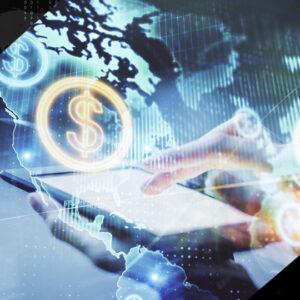Artificial Intelligence (AI) is changing the world as we know it. The implementation of this technology has allowed the optimization of processes and has facilitated customer service in multiple sectors. Banking is one of them, as, in recent years, it has incorporated these tools to offer a better user experience and personalized solutions that have contributed to the development of the sector. Jason Simon, an expert in banking and business optimization, explains how AI has arrived to change the way banking operates.
AI plays an important role today and will be even more important in the future, as technological innovation has enabled the development of new tools that make banks more efficient and secure entities. Currently, the financial sector uses this technology to have a 24/7 communication and advisory channel with its customers through a mobile application, its website, or social networks.
The personalization of the service allows these types of entities to get to know their users better in aspects such as consumption habits, interests, or digital behavior patterns in order to provide better service according to the preferences and needs of customers.
“Competition in the financial sector has encouraged banks to constantly seek to innovate and offer their customers more efficient and personalized services and products,” Simon points out. “AI-powered chatbots have become a key differentiator for financial institutions, shifting paradigms and implementing technological innovation to stay ahead of the industry and bring their products and services to a greater number of people.”
In addition, technological progress has allowed financial institutions to offer products and services digitally. For example, users have the facility to apply for loans, credit or debit cards, purchase insurance or invest in a fund without having to go to a branch. Currently, they also offer products such as loans or cards based on AI-generated models. For these, financial data, credit history, and customer consumption behavior are considered. In their quest to improve and innovate their services, products, security, and user experience, banks will continue to implement this type of technology and solutions. In addition, with the incorporation of AI, banks have more accurate and efficient security systems.
Simon says that “security on digital media and platforms is one of the main concerns going forward.” According to several studies, losses due to cybercrime worldwide will reach an annual cost of 10.5 trillion dollars by 2025. With the exponential growth of eCommerce and digital payment systems, the risks of virtual fraud have also grown. “In the coming years, banks will need to leverage AI to detect potential fraudulent threats quickly and accurately to ensure customer security,” he adds.
The banks of the future are not only shaping their progress in the area of security, but also in providing a better user experience. According to a survey conducted by the consulting firm McKinsey & Company, developing a superior user experience can have a very positive impact on a financial institution, as deposits grew 84% faster in banks with the highest customer satisfaction ratings than in banks with the lowest satisfaction scores. “To improve the user experience, it is imperative that financial institutions incorporate conversational interfaces such as voice assistants,” notes Simon.
AI advances in banking are tangible. According to research conducted by Simon, chatbots currently give these companies the ability to answer more than 90% of user queries. Bots can also help optimize processes, personalize financial product recommendations and calculate a user’s credit risk. All of these aspects are building the foundations of tomorrow’s banking.




 Bitcoin
Bitcoin  Ethereum
Ethereum  Tether
Tether  XRP
XRP  Solana
Solana  USDC
USDC  TRON
TRON  Dogecoin
Dogecoin  Lido Staked Ether
Lido Staked Ether  Cardano
Cardano  Wrapped Bitcoin
Wrapped Bitcoin  Hyperliquid
Hyperliquid  Wrapped stETH
Wrapped stETH  Bitcoin Cash
Bitcoin Cash  Sui
Sui  Chainlink
Chainlink  LEO Token
LEO Token  Avalanche
Avalanche  Stellar
Stellar  Toncoin
Toncoin  USDS
USDS  Shiba Inu
Shiba Inu  WETH
WETH  Litecoin
Litecoin  Wrapped eETH
Wrapped eETH  Hedera
Hedera  WhiteBIT Coin
WhiteBIT Coin  Binance Bridged USDT (BNB Smart Chain)
Binance Bridged USDT (BNB Smart Chain)  Monero
Monero  Bitget Token
Bitget Token  Ethena USDe
Ethena USDe  Polkadot
Polkadot  Coinbase Wrapped BTC
Coinbase Wrapped BTC  Uniswap
Uniswap  Aave
Aave  Pepe
Pepe  Pi Network
Pi Network  Dai
Dai  Aptos
Aptos  Ethena Staked USDe
Ethena Staked USDe  Bittensor
Bittensor  OKB
OKB  BlackRock USD Institutional Digital Liquidity Fund
BlackRock USD Institutional Digital Liquidity Fund  Jito Staked SOL
Jito Staked SOL  Internet Computer
Internet Computer  NEAR Protocol
NEAR Protocol  Ethereum Classic
Ethereum Classic  Cronos
Cronos  Ondo
Ondo